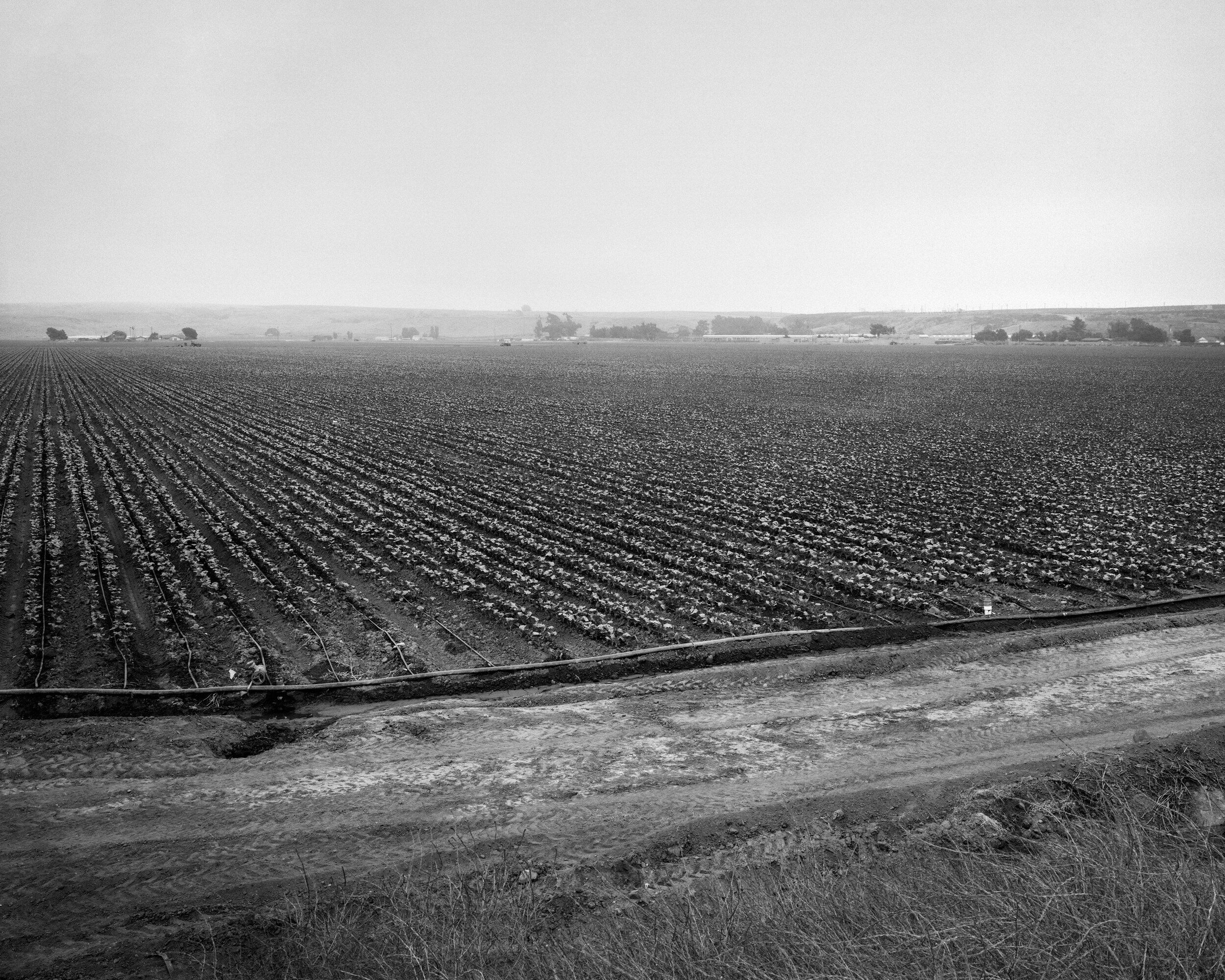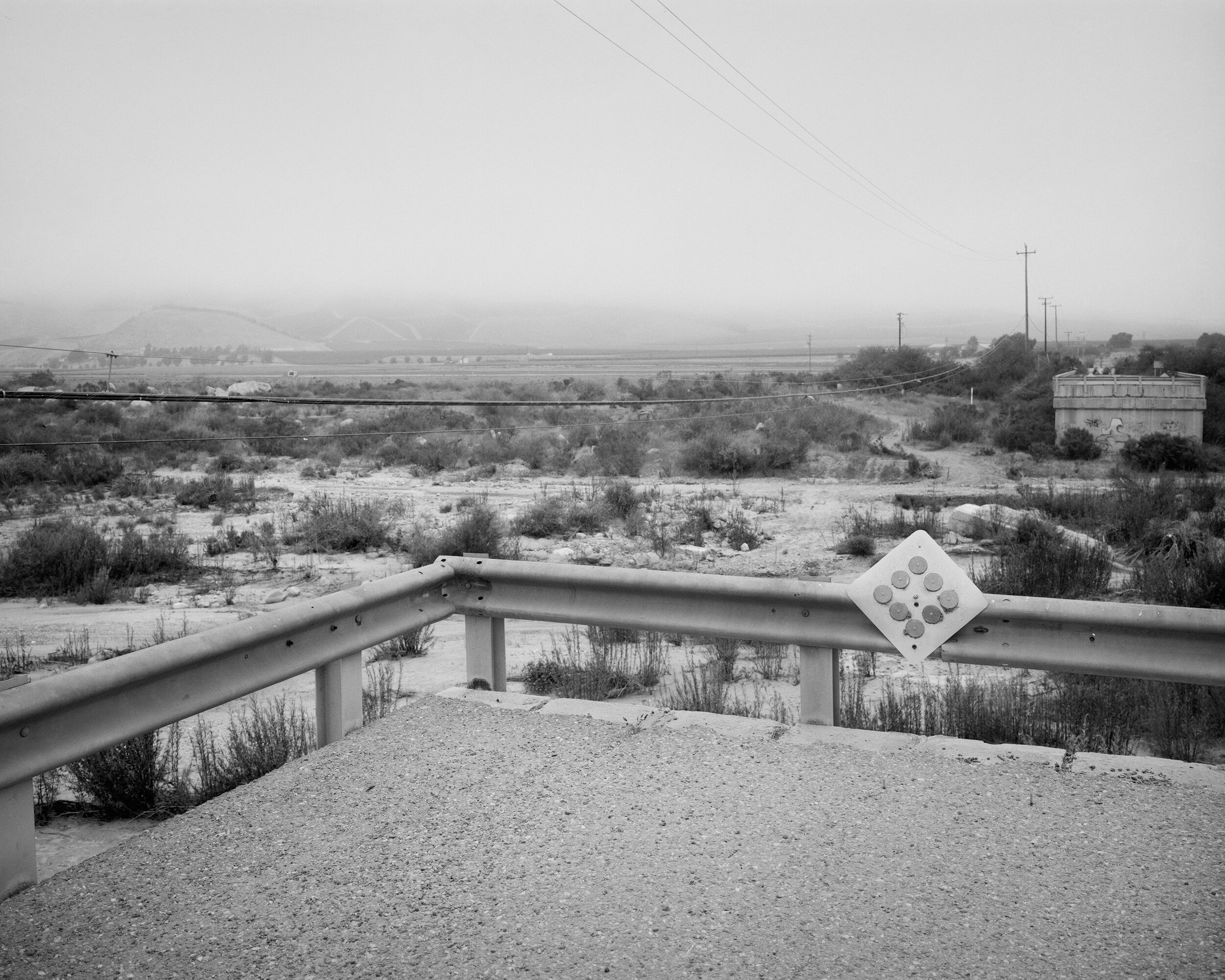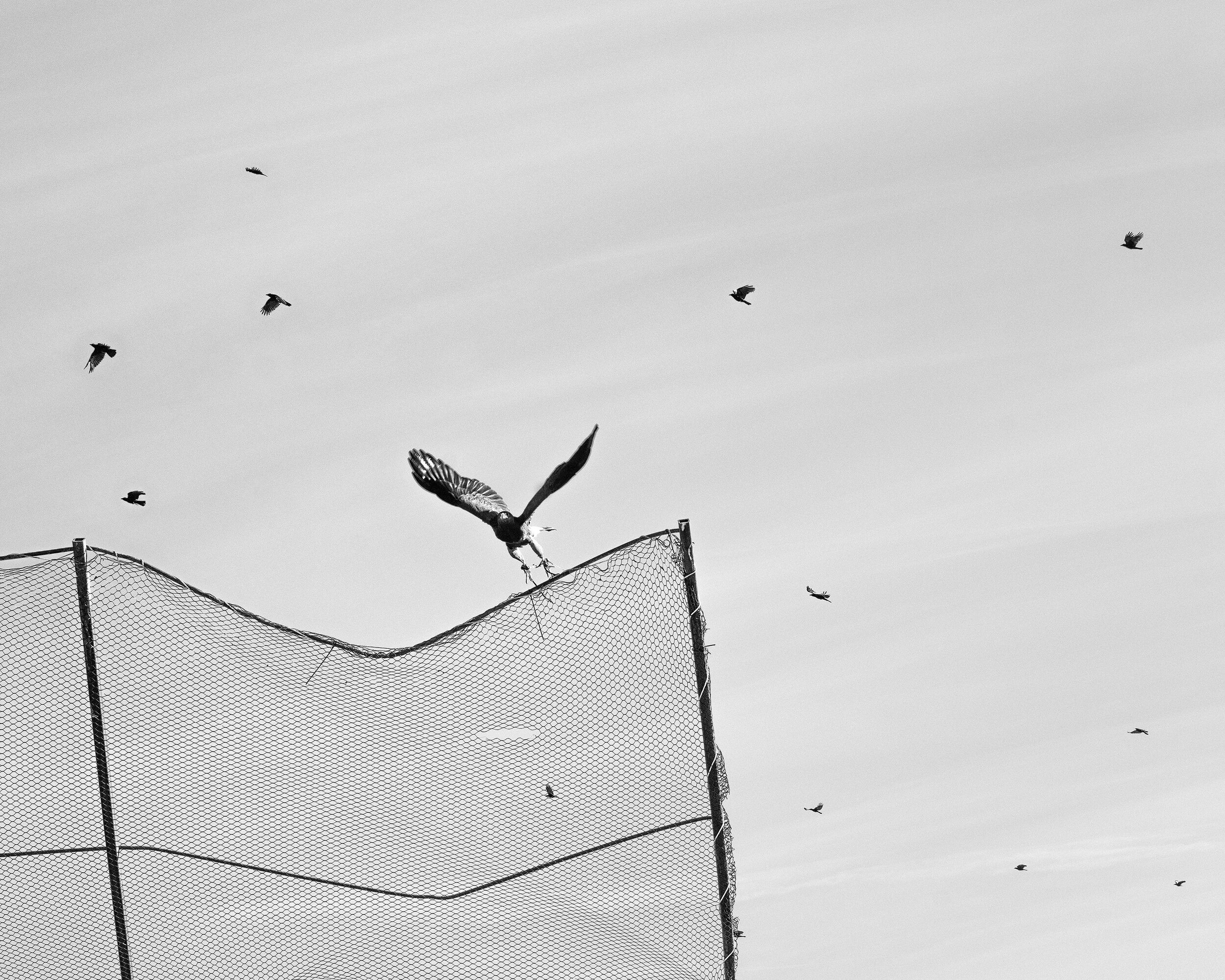Landfill: Elegy for the Santa Maria Valley
Landfill is a collection of eye-opening photographs made by Brett Kallusky in central California’s historic Santa Maria Valley. This body of work, however, directs our attention not to the world-renowned vineyards on the hillsides, a legacy of Spanish times, but to the vast agricultural production of row crops on the valley floor and the millions of tons of garbage and industrial refuse that finds its way to the regional landfill. The photographs of the landfill and the Valley reveal scenes that are literally hidden from public view and knowledge, underscoring their nature as documentary evidence of what is involved in growing crops that feed the nation.
Kallusky’s interest does not end there, for his depiction of this famous California landscape creates an opportunity for contemplative reflection of our complicit involvement in land use here, if only by eating the strawberries, carrots, and cauliflower that are grown in the Valley and transported to grocery stores throughout the U.S. Despite the cool formalism and detached documentary style of Kallusky’s pictures, assembled and sequenced as they are, he engages us in an extended consideration of our relationship with the land, drawing viewers into a new understanding of this place.
Given the Valley’s location near the oil-rich Pacific waters outside Santa Barbara, San Luis Obispo and Santa Barbara Counties, which comprise the Valley, have had their fair share of calamitous environmental events and contaminated locations associated with oil. These include, most recently, the superfund site in Casmalia, where 4.5 billion pounds of petroleum-based and other hazardous waste were transported to a disposal facility there from 1973 until its closing in 1989, and the massive out-of-control Union Oil Tank Fires at Avila Beach in 1908 and San Luis Obispo in 1926, where three workers were killed. Kallusky renders these places anew.
Addressing the current, human-centered epoch known as the Anthropocene, the quiet but powerful imagery of Kallusky’s Landfill examines the important connection between how the land is used and regarded. The Santa Maria landscape reveals who we are, as Kallusky’s photographs bring its invisible spaces into full view, showing how the earth supports our food needs on a massive scale, fueling a cyclical engine of consumption, waste, and renewal. The Santa Maria Valley is thus a microcosm of America with ramifications far beyond its geographical boundaries. What is left in the wake of that system to which we all belong? In Landfill, the landscapes we create tell it all.
“Plastic represents the promises of modernity: the promise
of sealed, perfected, clean, smooth abundance. It encapsulates
the fantasy of ridding ourselves of the dirt of the world, of decay,
of malfeasance.”















































